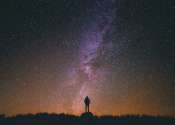A celestial butterfly emerges from its dusty cocoon
Some of the sharpest images ever made with ESO's Very Large Telescope have, for the first time, revealed what appears to be an ageing star giving birth to a butterfly-like planetary nebula. These observations of the red giant ...









